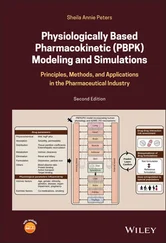With so much information packed into this readable book, it will quickly become a go‐to reference and primer of choice for anyone interested in modeling for public health and/or interested in studying the social determinants of health.
Patricia L. Mabry, PhD
Research Investigator
HealthPartners Institute
Former Senior Advisor and Acting Deputy Director, National Institutes of Health (NIH) Office of Behavioral and Social Sciences Research (OBSSR)
1 El‐Sayed, A.M. and Galea, S. (eds.) (2017). Systems Science and Population Health. Oxford University Press.
2 Kaplan, G.A., Diez Roux, A.V., and Simon, C.P. (eds.) (2017). Growing Inequality: Bridging Complex Systems, Population Health, and Health Disparities. Washington, D.C.: Westphalia Press.
3 Mabry, P.L. and Kaplan, R.M. (2013). Systems science: a good investment for the public’s health. Health Education and Behavior 40 (1 suppl): S9–S12.
4 Mabry, P.L., Milstein, B., Abraido‐Lanza, A.F. et al. (2013). Opening a window on systems science research in health promotion and public health. Health Education and Behavior 40 (1 suppl): 5S–8S.
5 Mabry, P.L., Olster, D.H., Morgan, G.D., and Abrams, D.B. (2008). Interdisciplinarity and systems science to improve population health: a view from the NIH office of behavioral and social sciences research. American Journal of Preventive Medicine 35 (2 suppl): S211–S224.
6 Valente, T.W. (2010). Social Networks and Health: Models, Methods, and Applications, vol. 1. New York: Oxford University Press.
I am grateful to the National Library of Medicine at the United States National Institutes of Health for awarding me a Grant for Scholarly Works in Biomedicine and Health to support the writing of this book (grant number G13 LM012056). I also express my appreciation to Kyle Oddis for editorial assistance. I dedicate this book to my father, Sung Gyum Kim, and to all those in the fields of social epidemiology and public health—past, present and future—who have devoted or will devote their lives to improving population health and health equity for all.
— Daniel Kim, MD, DrPH, Boston, Massachusetts
Figure 1.1Life expectancy at birth for OECD countries. Source : From OECD (2018).
Figure 1.2A social determinants of health conceptual framework. Source : Adapted from Kim and Saada (2013) and Solar and Irwin (2007).
Figure 1.3The 3 P's (people, places, and policies) population health triad.
Figure 1.4Examples of multiple public sectors collectively adopting a Health in All Policies (HiAP) approach.
Figure 2.1Key differences between agent‐based modeling, microsimulation modeling, and traditional statistical models.
Figure 3.1The PARTE framework. Source : Reproduced from Hammond (2015).
Figure 4.1Schelling checkerboard (initial state).
Figure 4.2Schelling checkerboard (first six moves).
Figure 4.3Schelling checkerboard (final state).
Figure 4.4Power law phenomena crop up throughout the social sciences: (a) US firm sizes. (b) Battle deaths by war (1816–2007). (c) US city populations (2010). (d) Word usage in English language books. (e) The distribution of Twitter followers among popular accounts.
Figure 4.5The Long House Valley in northeastern Arizona, present day.
Figure 4.6Dynamic landscape of potential maize production in Long House Valley.
Figure 4.7Actual and simulated population of Long House Valley between 800 and 1300 ad.
Figure 7.1Building blocks of a microsimulation model.
Figure 8.1Marginal effective tax rates (%) across the European Union, 2007. Source: Jara and Tumino (2013) using EUROMOD .
Figure 8.2Total net child‐contingent payments vs. gross family/parental benefits per child as a percentage of per capita disposable income. Source : Figari et al. (2011b) using EUROMOD.
Figure 8.3Impact of fiscal consolidation measures by household income decile group. Source : Paulus et al. (2017) using EUROMOD.
Figure 8.4Europe and the United States: own‐wage elasticities. Source : Bargain et al. (2014) using EUROMOD and TAXSIM.
Figure 9.1Published documents in Web of Science using combined keywords “microsimulation” and (“health” OR “disease”), 1991–2017.
Figure 11.1Conceptual components of a potential ABM–MSM hybrid model and its applications. Source : Adapted from Bae et al. (2016).
Table 4.1Selected subsequent papers related to Schelling’s original ABM papers.
Table 4.2Selected subsequent papers related to Axtell et al.’s original ABM paper.
Table 5.1Number of hits from the literature search for peer‐reviewed published articles using ABM in each topic area.
Table 7.1Selection of microsimulation health‐related models.
Table 8.1Number of entries related to “microsimulation” in social sciences.
Table 8.2Incidence of indirect tax payments.
Part I Introduction
1 A Primer on the Social Determinants of Health
Daniel Kim
Bouvé College of Health Sciences, Northeastern University, Boston, MA, USA
School of Public Policy and Urban Affairs, Northeastern University, Boston, MA, USA
We begin this book with a simple example of cross‐country comparisons of life expectancy that illustrates the striking differences in health across populations. The social determinants of health—fundamental social and economic conditions in which we live, work, and play—may help to shape and explain such stark population health inequalities. In this introductory chapter, I present a conceptual framework for the social determinants of health and two related population health frameworks—the 3 P's (people, places, and policies) Population Health Triad and the Health in All Policies (HiAP) approach. I next discuss approaches for studying the social determinants of health, highlight what we know so far about them, and give some practical examples of their estimated large public health impacts if we were to intervene and modify them.
1.2 The Health Olympics: Winners and Losers
The “Health Olympics” is a term that was coined to describe how rich countries perform relative to each other in life expectancy at birth (Population Health Forum 2003). Figure 1.1shows these results for 2017 by sex and for the sexes combined based on data for Organisation for Economic Co‐operation and Development (OECD) countries (OECD 2018). In these hypothetical Olympics, there are clear winners and losers.
Despite being one of the richest nations in the world, the United States fails to medal in this imaginary international competition; in fact, it falls well short of the podium, placing twenty‐seventh, with an overall life expectancy of 78.6 years. By contrast, Japan wins the gold medal for life expectancy for men and women combined at 84.1 years—first among women at 87.1 years, second among men at 81.0 years—and bests the United States by 5.5 years, an enormous gap in life expectancy at a population level. Meanwhile, Australia and a number of countries in the European Union either land on the medal podium or are at least very close to it ( Figure 1.1).
Читать дальше












